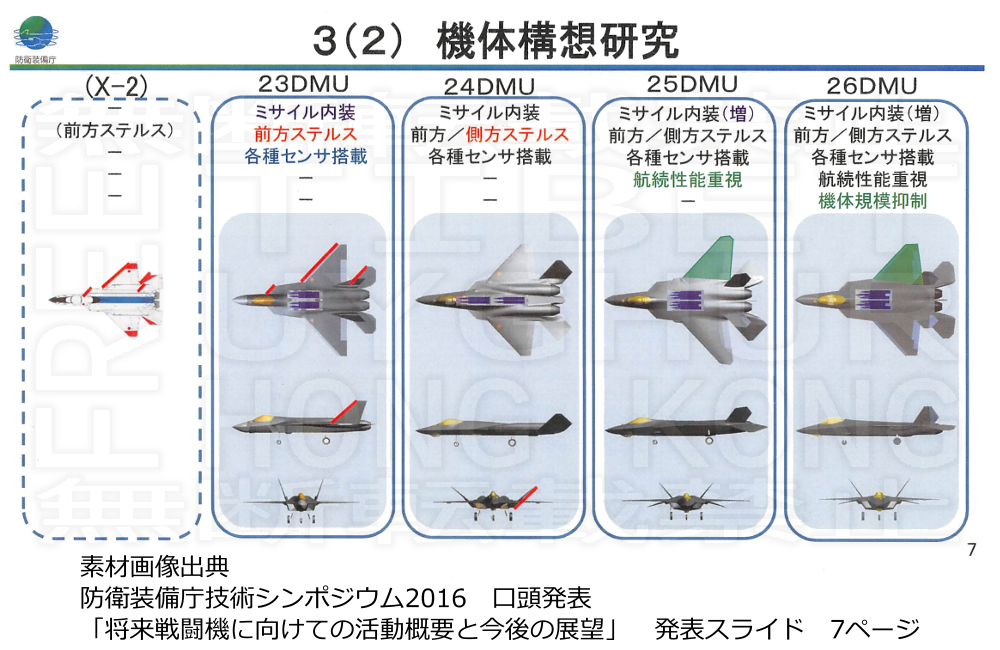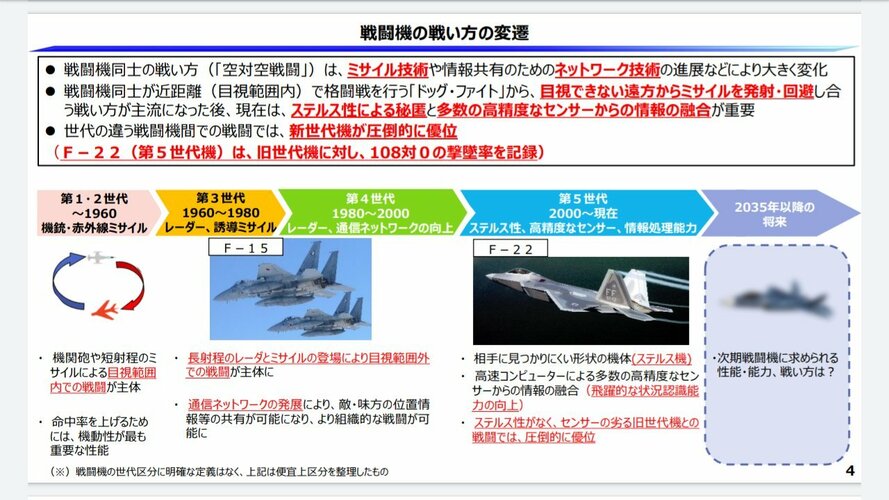You are using an out of date browser. It may not display this or other websites correctly.
You should upgrade or use an alternative browser.
You should upgrade or use an alternative browser.
Japanese next generation fighter studies pre GCAP (aka i3, F-3)
- Thread starter bobbymike
- Start date
-
- Tags
- f-3 japan mitsubishi
red admiral
ACCESS: Top Secret
- Joined
- 16 September 2006
- Messages
- 1,574
- Reaction score
- 1,785
I think its a bit of a stretch to say that a configuration with V tails means a link to Northrop. I mean no one's saying that about the French NGF mockup from last year.
I don't remember seeing NG mentioned in any of the news stories around this; LM, Boeing, BAES, Airbus yes but thats it.
I have got to wonder what "support" Japan actually wants from the foreign companies.
I don't remember seeing NG mentioned in any of the news stories around this; LM, Boeing, BAES, Airbus yes but thats it.
I have got to wonder what "support" Japan actually wants from the foreign companies.
FighterJock
ACCESS: Top Secret
- Joined
- 29 October 2007
- Messages
- 4,746
- Reaction score
- 4,334
Did you see anything ever saying that NG had expressed an interest? I don't think i did.Interesting to see that Northrop Grumman failed to make the cut for the F-3, though it is good to see BAE Systems still represented.
For a while we did see those designs that were reminiscent of the YF-23 design so I automatically thought that Northrop was helping out (at least in the background) with the designing of the F-3.
what you saw was most likely 24DMU
but since then they went to other, more Lockmart style designs.
but like many I was an YF-23 fan and wished 24DMU became real due to how similar they looked

It was the 24DMU that I saw helmutkohl, obviously it was too advanced for what the Japanese were looking for in a stealthy fighter and went down the Lockheed design route instead.
- Joined
- 16 April 2008
- Messages
- 8,904
- Reaction score
- 12,253
I don't remember seeing NG mentioned in any of the news stories around this; LM, Boeing, BAES, Airbus yes but thats it.
Lots of reporting from the July 2018 timeframe. And then it mostly disappears.

Exclusive: Northrop Grumman angles for role in Japanese stealth fighter programme - sources
Northrop Grumman Corp is eyeing a Japanese jet fighter project that could pit it against Lockheed Martin Corp, three sources said, almost three decades after it lost a similar competition to build an advanced stealth jet for the U.S. Air Force.
Ares
Man from Far East
- Joined
- 15 October 2018
- Messages
- 75
- Reaction score
- 299
I think its a bit of a stretch to say that a configuration with V tails means a link to Northrop. I mean no one's saying that about the French NGF mockup from last year.
I don't remember seeing NG mentioned in any of the news stories around this; LM, Boeing, BAES, Airbus yes but thats it.
I have got to wonder what "support" Japan actually wants from the foreign companies.
Mostly technical support on the integration of major parts and software shenanigan which are Japan's weaknesses, plus, securing interoperability with the US and NATO forces. Some parts and technologies may jointly be developed to have commonality with the US or UK's next-gen fighter.
Ares
Man from Far East
- Joined
- 15 October 2018
- Messages
- 75
- Reaction score
- 299
Oh, this is unexpected. Never thought LM and NG would team-up.
Japan’s Acquisition, Technology & Logistics Agency (ATLA) confirms that the RFI was issued on 16 September, with seven companies showing initial interest. Only BAE, Boeing, and Lockheed replied prior to the RFI’s deadline – the Lockheed bid also involves Northrop Grumman.
.
.
.
“Lockheed Martin has responded to Japan’s F-X Request for Information (RFI) with Northrop Grumman,” says the company. “Our comprehensive RFI response outlines potential areas of development support and participation that could significantly reduce F-X development costs and schedule by leveraging close industry cooperation with Japan’s F-X integrator, Mitsubishi Heavy Industries (MHI), and ensuring indigenous design and sovereignty.”
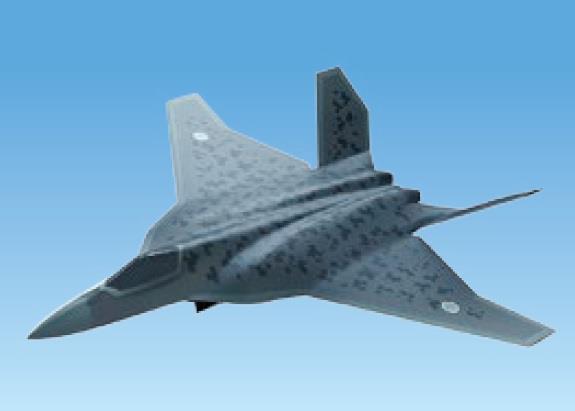
 www.flightglobal.com
www.flightglobal.com
Japan’s Acquisition, Technology & Logistics Agency (ATLA) confirms that the RFI was issued on 16 September, with seven companies showing initial interest. Only BAE, Boeing, and Lockheed replied prior to the RFI’s deadline – the Lockheed bid also involves Northrop Grumman.
.
.
.
“Lockheed Martin has responded to Japan’s F-X Request for Information (RFI) with Northrop Grumman,” says the company. “Our comprehensive RFI response outlines potential areas of development support and participation that could significantly reduce F-X development costs and schedule by leveraging close industry cooperation with Japan’s F-X integrator, Mitsubishi Heavy Industries (MHI), and ensuring indigenous design and sovereignty.”

BAE, Boeing, Lockheed respond to new Japanese F-X RFI
BAE Systems, Boeing, and Lockheed Martin have replied to a request for information (RFI) related to work on Tokyo's F-X future fighter programme. Japan's Acquisition, Technology & Logistics Agency (ATLA) confirms that the RFI was issued on 16 September, with seven companies showing initial...
Last edited:
red admiral
ACCESS: Top Secret
- Joined
- 16 September 2006
- Messages
- 1,574
- Reaction score
- 1,785
The UK is in Europe last I checked...Amazing that no one in Europe bothered to reply despite schedule and objectives being quite similar... A lost opportunity to track down cost?
kaiserd
I really should change my personal text
- Joined
- 25 October 2013
- Messages
- 1,665
- Reaction score
- 1,669
Last time I queried that there was no shortage of those that didn’t see it that way.The UK is in Europe last I checked...Amazing that no one in Europe bothered to reply despite schedule and objectives being quite similar... A lost opportunity to track down cost?
Japan won’t be worried about any of that when they almost certainly opt for cooperation with the US.
red admiral
ACCESS: Top Secret
- Joined
- 16 September 2006
- Messages
- 1,574
- Reaction score
- 1,785
Also kinda obvious that the EU isn't the same as Europe despite some trying to conflate the two.
I'm not surprised Airbus etc weren't that interested as a key Japanese requirement is interoperability with US systems e.g. F-35-MADL etc. Whereas SCAF effort is deliberately trying to avoid being closely interoperable (can obviously still do things at tactics, mission level)
I'm not surprised Airbus etc weren't that interested as a key Japanese requirement is interoperability with US systems e.g. F-35-MADL etc. Whereas SCAF effort is deliberately trying to avoid being closely interoperable (can obviously still do things at tactics, mission level)
Ares
Man from Far East
- Joined
- 15 October 2018
- Messages
- 75
- Reaction score
- 299
Some information came from an online forum held by the International Security Industry Council of Japan;
Takayoshi Yamazaki(retired Lt.Gen of JASDF, former Director-General of the Department of Air Systems Development) said F-X will be larger scale than the F-22, including the number of missiles loaded. Combat action radius will also be much wider than the F-22 thanks to its large wings. It will play a key role in IAMD and will have AWACS and BMD capabilities as well.(It is likely to become the largest single seat fighter in the world alongside USAF's NGAD)
As for the network, the Ministry of Defense recognizes that interoperability with the US is the most important. And it will have a multi-domain network that can integrate all of the systems on not only air but land and sea. As for the expandability, cooperation with unmanned aircraft and laser weapon will be introduced, and such large aircraft has the advantage to operate these future features.



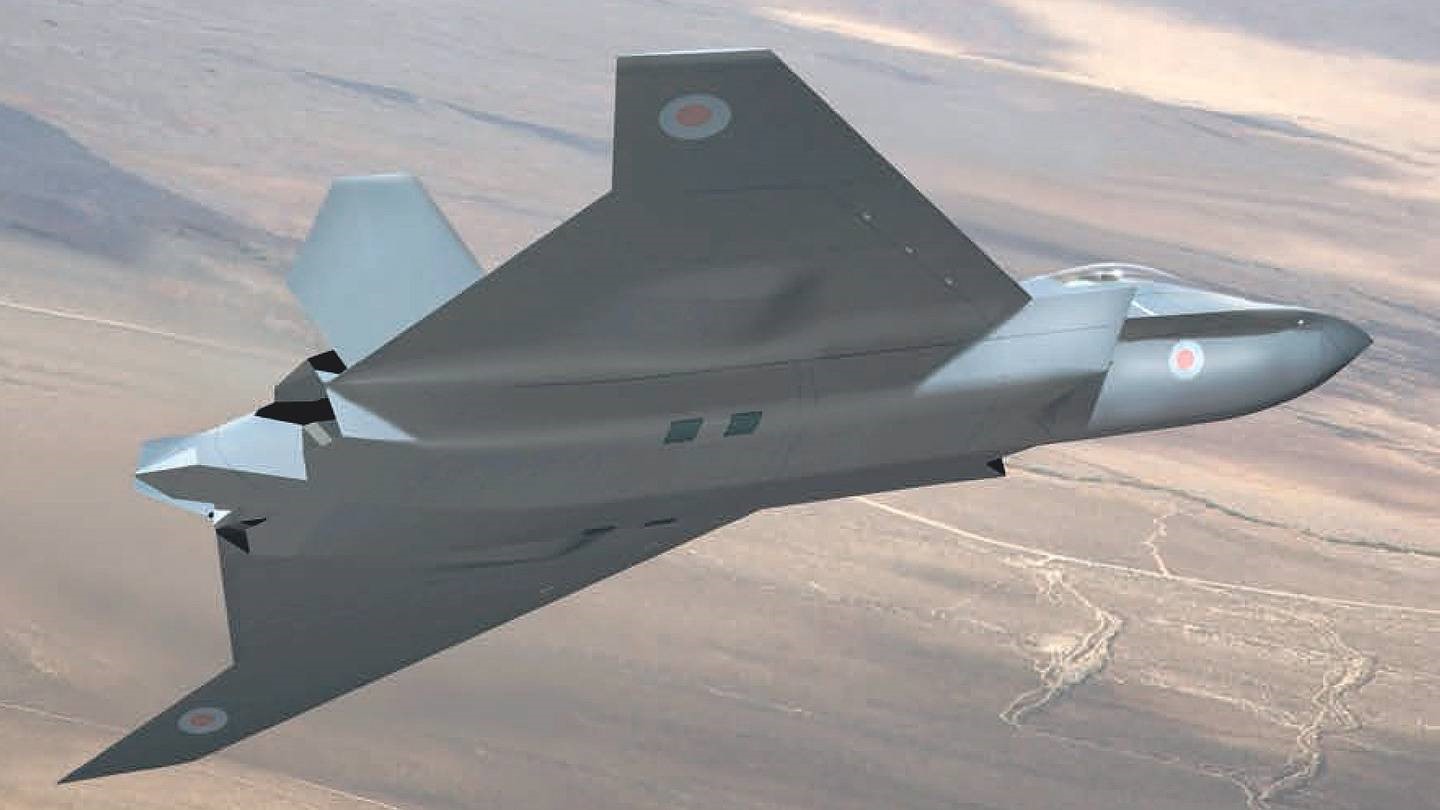
 isic-japan.org
View: https://twitter.com/Hi_yukkuri/status/1326447113824210944
isic-japan.org
View: https://twitter.com/Hi_yukkuri/status/1326447113824210944

* not an official image
Takayoshi Yamazaki(retired Lt.Gen of JASDF, former Director-General of the Department of Air Systems Development) said F-X will be larger scale than the F-22, including the number of missiles loaded. Combat action radius will also be much wider than the F-22 thanks to its large wings. It will play a key role in IAMD and will have AWACS and BMD capabilities as well.(It is likely to become the largest single seat fighter in the world alongside USAF's NGAD)
As for the network, the Ministry of Defense recognizes that interoperability with the US is the most important. And it will have a multi-domain network that can integrate all of the systems on not only air but land and sea. As for the expandability, cooperation with unmanned aircraft and laser weapon will be introduced, and such large aircraft has the advantage to operate these future features.
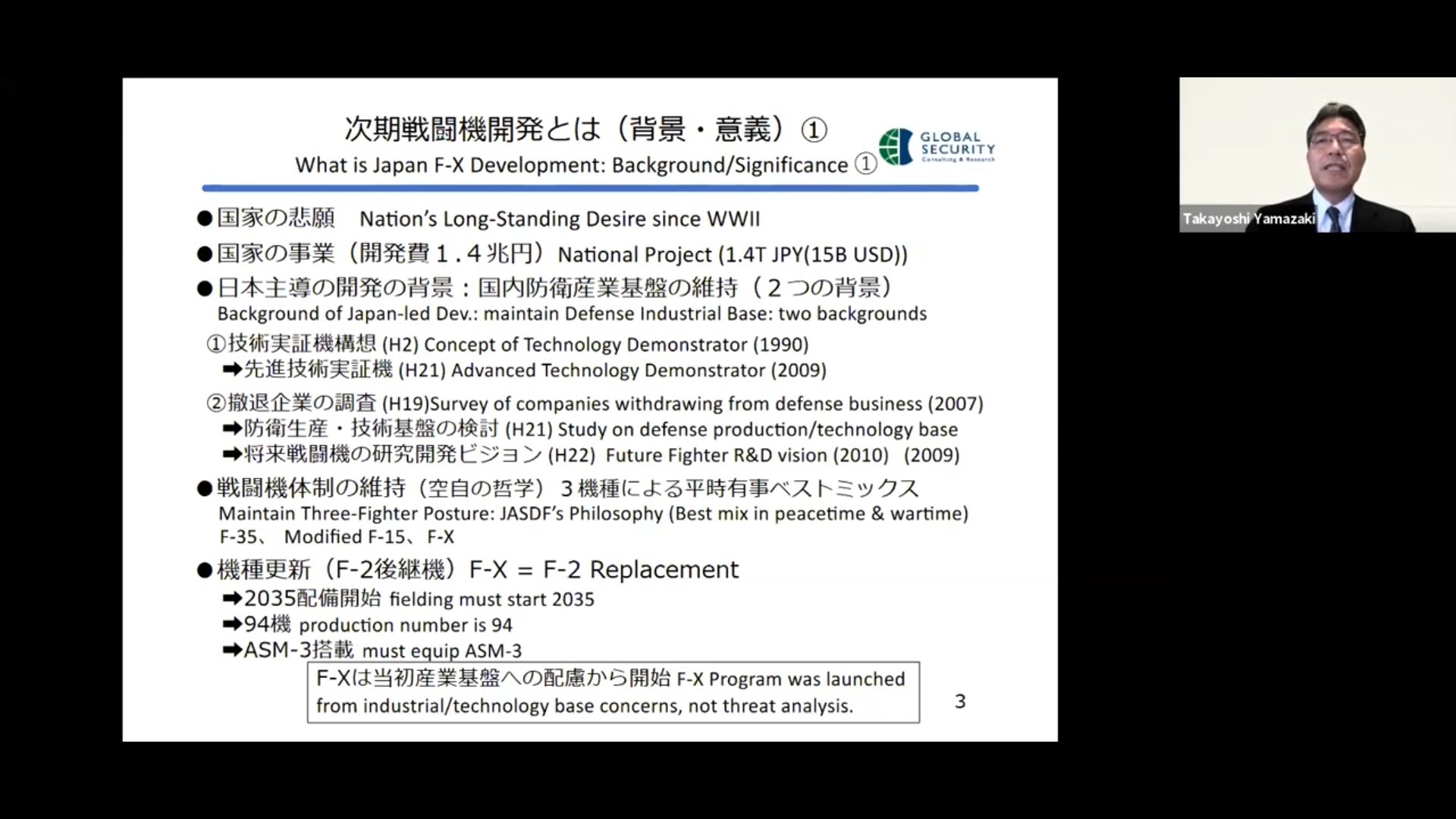
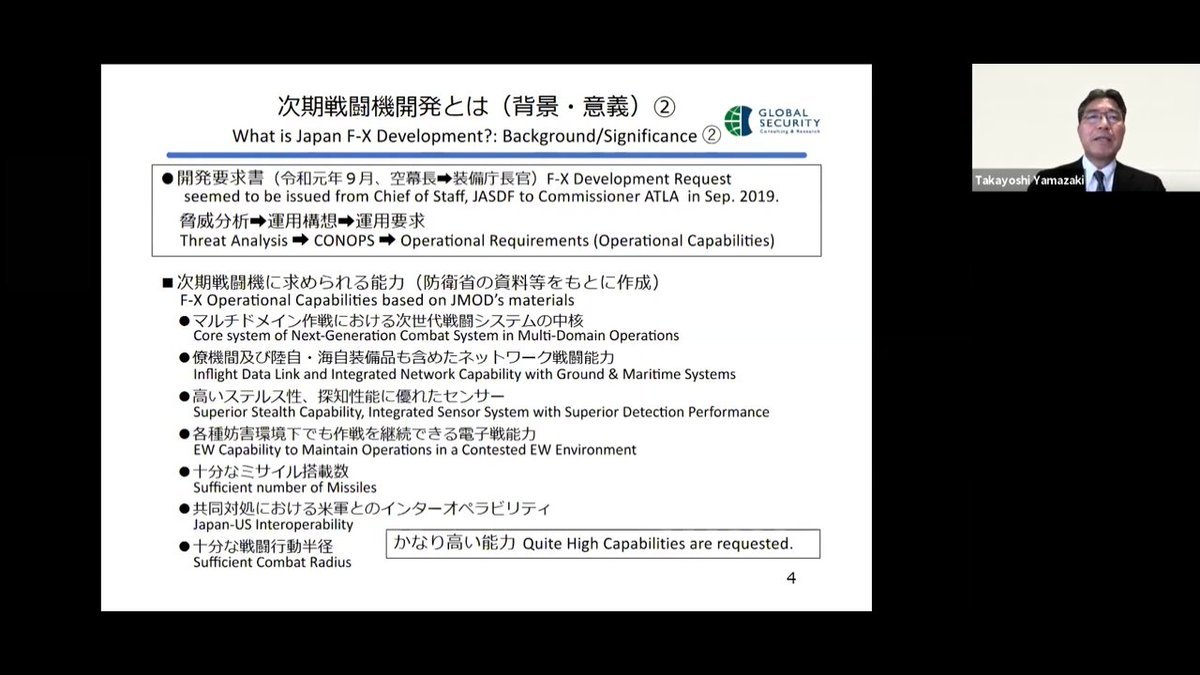
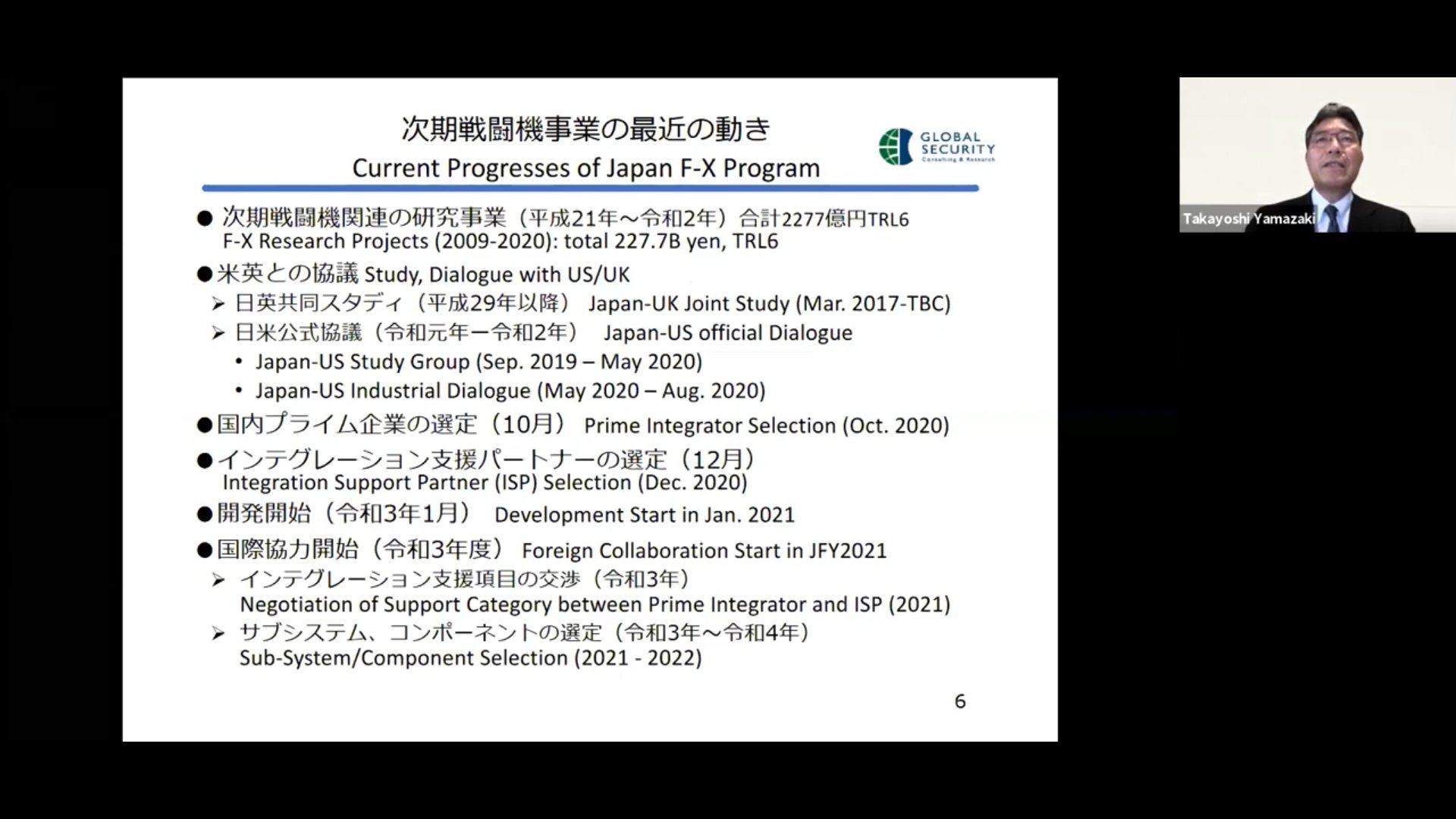

F-X Program Progresses - ISIC Japan - International Security Industry Council
The Japanese government’s plan to develop a next generation fighter aircraft – the F-X – is seen as critical both to develop an advanced multirole combat aircraft and to preserve the country’s engineering and manufacturing skills base. While a “Japan-led” approach to F-X acquisition emphasizes...
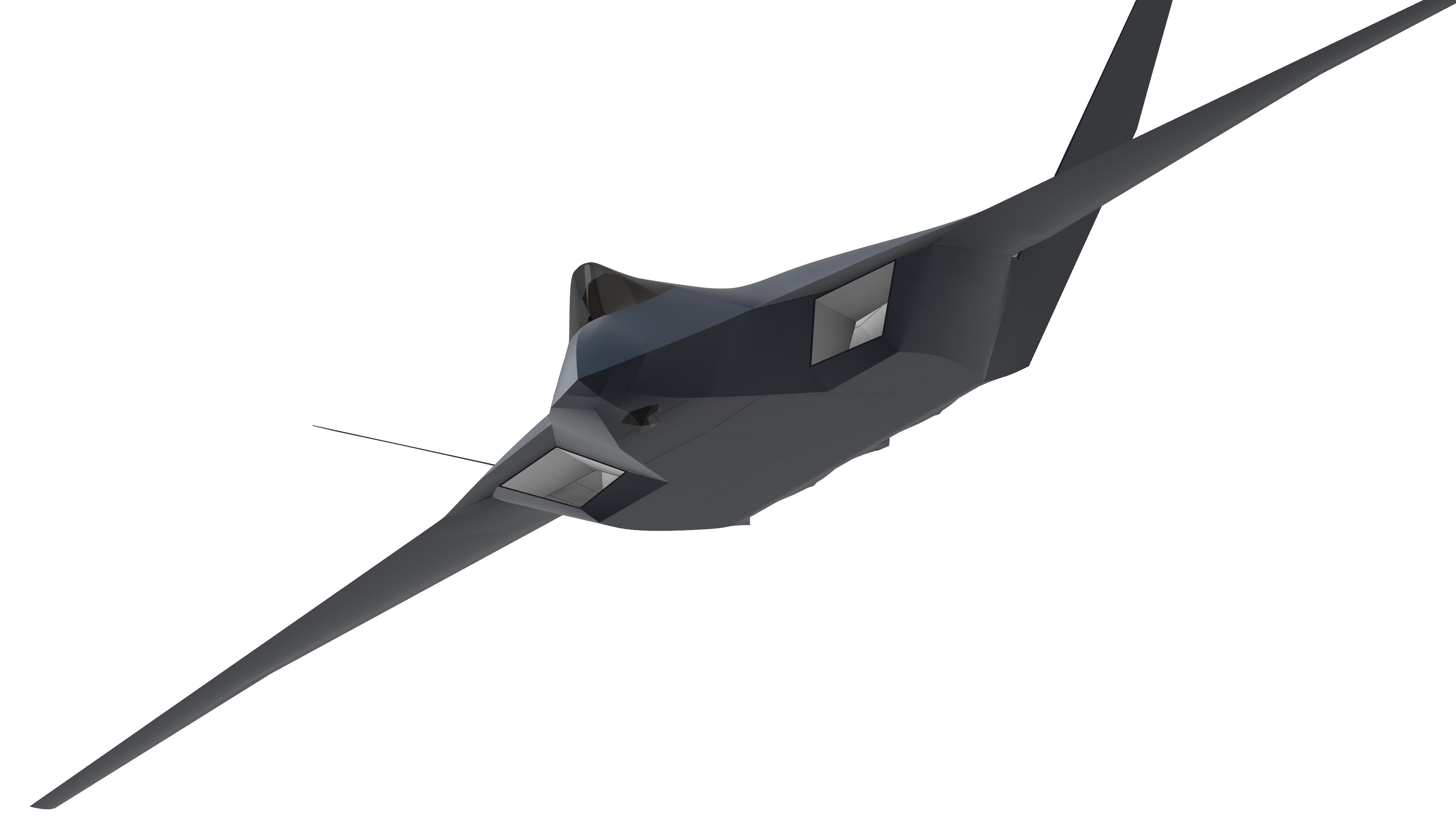
* not an official image
Last edited:
This makes it quite clear that airframe commonality with anything BAE has in mind for UK requirements is very unlikely. I'd been wondering about that, since great persistence has figured consistently and prominently in Japanese official information on this project for several years, and obviously they are standing their ground.
EDIT: "Must equip ASM-3" - hmmm... internally? That alone would mean a huge fighter!
EDIT: "Must equip ASM-3" - hmmm... internally? That alone would mean a huge fighter!
- Joined
- 11 February 2010
- Messages
- 1,522
- Reaction score
- 2,235
94 Fighters. I would expect F3 would take F-15's role too. But, guess they're ready for the price tag for such number.
@Trident : I very much think that the synergies with UK requirements does not preclude large business jet size. UK military posture post EU centric addiction will spread their reach at a scale similar to UK economical influence. That will involve a lot of oversea missions with long transoceanics capabilities. Just imagine a stronger posture with China and the basing then left available to trim down tensions.
Last but not least FACAS can be a double headed beast (or more accurately a double bodied one).
You have to think that with such large fighters (such as what promise to be most serious 6th Gen), every systems will be new: larger fuel pumps, larger actuator, new trimmed down paneling, bulking, new designed light weight spars... The potential industrial benefits are huges and it would be folly to keep your contractors out of this race.
Last but not least FACAS can be a double headed beast (or more accurately a double bodied one).
You have to think that with such large fighters (such as what promise to be most serious 6th Gen), every systems will be new: larger fuel pumps, larger actuator, new trimmed down paneling, bulking, new designed light weight spars... The potential industrial benefits are huges and it would be folly to keep your contractors out of this race.
Last edited:
- Joined
- 6 September 2006
- Messages
- 4,517
- Reaction score
- 8,262
It's hard to gauge whether the UK is still involved on the airframe side; "Japan-UK Joint Study - Mar 2017 - TBC" pre-dates the Japan-US study group by two years but its clear that subsequent efforts are far closer linked to the Japan-US study group. TBC could mean the UK study is currently still ongoing and not yet terminated or simply that the date for its winding up is unclear. Its possible the UK might be involved in the radar and AAM aspects, but probably not in the airframe or engines.
This does sound like a larger fighter than Tempest, but then Tempest is still in its early design days so its not impossible that it might grow in size.
This does sound like a larger fighter than Tempest, but then Tempest is still in its early design days so its not impossible that it might grow in size.
kaiserd
I really should change my personal text
- Joined
- 25 October 2013
- Messages
- 1,665
- Reaction score
- 1,669
Convergence with concurrent US requirements and developments would appear to make technology sharing and partnership with the US a no-brainer for Japan re: their next generation fighter aircraft. And that’s before wider political and economic considerations that similarly would overwhelmingly favour the US as partner for Japan.
I can see why the UK would want Japan as a partner to help make the Tempest a reality. However I see little to no reason why Japan would select the UK and not the US, or why anyone would think there was any realistic likelihood that they would do so.
And suggestions that UK requirements re: Tempest would be significantly influenced by expedition warfare against mainland China type- scenarios are even more far-fetched.
I can see why the UK would want Japan as a partner to help make the Tempest a reality. However I see little to no reason why Japan would select the UK and not the US, or why anyone would think there was any realistic likelihood that they would do so.
And suggestions that UK requirements re: Tempest would be significantly influenced by expedition warfare against mainland China type- scenarios are even more far-fetched.
Ares
Man from Far East
- Joined
- 15 October 2018
- Messages
- 75
- Reaction score
- 299
Rolls Royce expresses interest on joint development of common engine for UK and Japan's future fighters.
.
.
.
In an interview with Nikkei by the 16th, the Head of Defense at Rolls-Royce, a major British aviation engine maker, expressed his willingness to develop and research the engine of the next fighter jet, which the Japanese government aims to deploy in 2035, saying, "We want to be actively involved as Rolls Royce, and as Britain. The British government is aiming to deploy its next fighter jet at the same time, and the cost of mass production through cooperation between Japan and Britain will be reduced."
Alexander Zino, Director of Defense Business Department and Development of Future Programs, responded to the interview. Regarding the development of the next fighter jet to replace Japan's F2 fighter jet, he said, "We hope to jointly develop one engine in Japan and Britain and use it as a driving source for both Japan's and Britain's. "As for the engine for the next fighter jet, IHI has already developed a prototype in Japan and is considering joint development and research.
Britain has a technology development program called "Tempest" for next-generation fighter jets, but it does not presume its own development. Its purpose is to share development costs and produce mass production effects with Japan and European countries, which have the similar development plans at the same time.
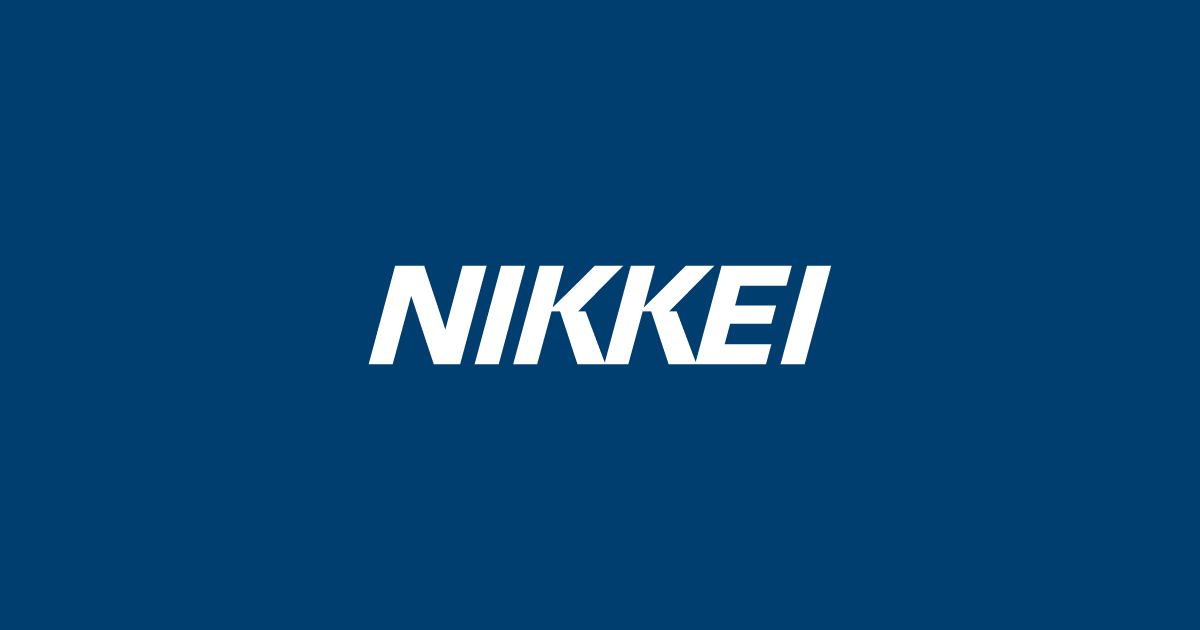
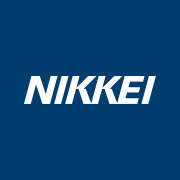 r.nikkei.com
r.nikkei.com
Well, UK recently helped Japan on certification process of military jet engine, so maybe this will also happen too?
.
.
.
In an interview with Nikkei by the 16th, the Head of Defense at Rolls-Royce, a major British aviation engine maker, expressed his willingness to develop and research the engine of the next fighter jet, which the Japanese government aims to deploy in 2035, saying, "We want to be actively involved as Rolls Royce, and as Britain. The British government is aiming to deploy its next fighter jet at the same time, and the cost of mass production through cooperation between Japan and Britain will be reduced."
Alexander Zino, Director of Defense Business Department and Development of Future Programs, responded to the interview. Regarding the development of the next fighter jet to replace Japan's F2 fighter jet, he said, "We hope to jointly develop one engine in Japan and Britain and use it as a driving source for both Japan's and Britain's. "As for the engine for the next fighter jet, IHI has already developed a prototype in Japan and is considering joint development and research.
Britain has a technology development program called "Tempest" for next-generation fighter jets, but it does not presume its own development. Its purpose is to share development costs and produce mass production effects with Japan and European countries, which have the similar development plans at the same time.

ロールス・ロイス、次期戦闘機エンジンに意欲 日英で協力、量産効果狙う - 日本経済新聞
英航空エンジン大手のロールス・ロイスの防衛部門責任者は16日までに日本経済新聞社の取材に応じ、日本政府が2035年の配備を目指す次期戦闘機のエンジン開発について、「ロールスとして、また英国として積極的に関わりたい」と開発や研究への意欲を示した。英国政府は同時期の自国の次期戦闘機の配備を目指しており、日英の協力による量産がコストダウンにつながるとみている。防衛部門事業開発・フューチャープログラム
 r.nikkei.com
r.nikkei.com
Well, UK recently helped Japan on certification process of military jet engine, so maybe this will also happen too?
Last edited:
Ares
Man from Far East
- Joined
- 15 October 2018
- Messages
- 75
- Reaction score
- 299
Japan selected LM/NG consortium as technical assistance partner.

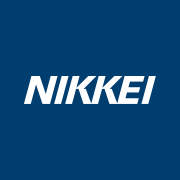 www.nikkei.com
www.nikkei.com
Lockheed was chosen because of development achievements and the alliance between Japan and the United States. It has developed F-22 and F-35, which are considered the world's best, and has a reputation for stealth technology.
Cooperate with Mitsubishi Heavy Industries mainly in terms of airframe design and system integration.
At the time of development, emphasis will be placed on interoperability between Japan and the United States. In preparation for an emergency, the next fighter will connect data with the US military's mainstay F22 and F35, making it easier to jointly operation between.
Lockheed collaborated with Northrop Grumman on the proposal to Japan. Northrop is strong in "data links" and sensors that connect information with multiple fighters. Teaming up with Lockheed also has the advantage of making it easier to receive technical assistance from Northrop.
Individual components will also explore collaboration with British companies that are building partnerships with Japan in defense technology research. BAE has strengths in electronic warfare technology that uses electromagnetic waves to prevent opponents from attacking.
Behind the development of the next fighter aircraft led by Japan is the speculation that it will lead to innovation of domestic companies and development of new industries.

次期戦闘機を日米で開発 三菱重主導、ロッキードが支援 【イブニングスクープ】 - 日本経済新聞
政府が2035年の配備をめざす次期戦闘機の開発体制の大枠が固まった。三菱重工業を開発主体として、米防衛大手でF35などの開発実績をもつロッキード・マーチンが技術支援する。日米企業が協力して開発し、自衛隊と米軍が一体運用する最新鋭機となる。中国の軍事的台頭など緊迫する東アジア情勢をにらみ、日米同盟の連携を深める。【関連記事】・・・防衛省が近く公表する。今月下旬に閣議決定する2021年度予算案に構想設計費を盛り込み、同社の支援を受けて性能や開発費を詰める。次期戦闘機は日米が共同開発した航空自衛隊の
 www.nikkei.com
www.nikkei.com
Last edited:

Lockheed to back Mitsubishi Heavy-led Japan fighter project
IHI, Subaru, Toshiba and Fujitsu among homegrown jet co-developers
Let's be honest, if LM is in charge of contractors management with Northrop mentioned as data link integrator, it can only means that all the 35/22 team is in (Bae...).
Naming LM, among all other advantages, would seems as the easiest path to stand clear of any future litigation...
I am sure the Brits would have been re-assured to have their name on the front wall but at the end that's the money that matters.
Naming LM, among all other advantages, would seems as the easiest path to stand clear of any future litigation...
I am sure the Brits would have been re-assured to have their name on the front wall but at the end that's the money that matters.
kaiserd
I really should change my personal text
- Joined
- 25 October 2013
- Messages
- 1,665
- Reaction score
- 1,669
Not sure it’s 100 percent confirmed yet but it’s still significant if deeply unsurprising news.

 www.japantimes.co.jp
www.japantimes.co.jp

Article expired
News on Japan, Business News, Opinion, Sports, Entertainment and More
- Joined
- 11 February 2010
- Messages
- 1,522
- Reaction score
- 2,235
I guess this time around Japan will try to do better in not repeating the case of F-2...where the end result was entirely different than what they were intended to be.
They have the engine, manufacturing advanced materials and avionics. So US may not necessarily able to "push" Japan to make "just an improved F-22's"
They have the engine, manufacturing advanced materials and avionics. So US may not necessarily able to "push" Japan to make "just an improved F-22's"
US and UK BAE are completely different entities, unfortunately this is usually lost on the lay reporting.Let's be honest, if LM is in charge of contractors management with Northrop mentioned as data link integrator, it can only means that all the 35/22 team is in (Bae...).
Naming LM, among all other advantages, would seems as the easiest path to stand clear of any future litigation...
I am sure the Brits would have been re-assured to have their name on the front wall but at the end that's the money that matters.
aonestudio
I really should change my personal text
- Joined
- 11 March 2018
- Messages
- 2,771
- Reaction score
- 6,735
Japan selects Lockheed Martin to support MHI in developing next-generation fighter aircraft
Japan’s Ministry of Defense (MoD) announced on 18 December that it has chosen Lockheed Martin to support prime contractor Mitsubishi Heavy Industries (MHI) in developing...
The MoD pointed out that Lockheed Martin is still officially a “partner candidate” as MHI has yet to finalise the terms of a deal with the US company.
Meanwhile, Tokyo said it will continue to seek partners to work on individual parts and sub-systems for the aircraft, including the engine and avionics. In this context the MoD said it will continue to explore possibilities to co-operate with the United Kingdom and the United States.
Mitsubishi Heavy Industries Ltd with help from Lockheed Martin Corp, gets $706 million in the new budget.

Japan sets record $52 billion military budget with stealth jets, long-range missiles
Japanese Prime Minister Yoshihide Suga's government approved a ninth consecutive rise in military spending on Monday, funding the development of an advanced stealth fighter and longer-range anti-ship missile to counter China's growing military power.
- Joined
- 29 November 2010
- Messages
- 1,727
- Reaction score
- 3,336
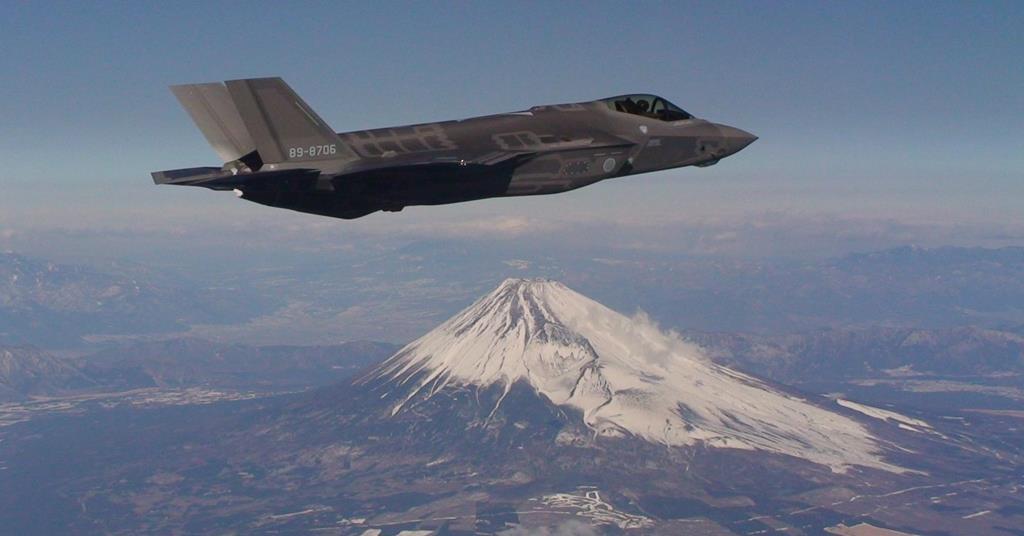
Tokyo earmarks funds for aircraft acquisitions, F-X work
Tokyo has dedicated Y57.6 billion ($557 million) to its developmental F-X fighter in its next financial year starting 1 April 2021, as well as earmarking funds for a range of other aircraft.
FighterJock
ACCESS: Top Secret
- Joined
- 29 October 2007
- Messages
- 4,746
- Reaction score
- 4,334

Tokyo earmarks funds for aircraft acquisitions, F-X work
Tokyo has dedicated Y57.6 billion ($557 million) to its developmental F-X fighter in its next financial year starting 1 April 2021, as well as earmarking funds for a range of other aircraft.www.flightglobal.com
Interesting news about the funding of the F-X aircraft helmutkohl, as well as funding other aircraft. I wonder what the other aircraft could be? Unmanned X-47 type stealthy Drones?
- Joined
- 29 November 2010
- Messages
- 1,727
- Reaction score
- 3,336
more on Japan's FX and other aircraft budget

 www.flightglobal.com
www.flightglobal.com

Tokyo earmarks funds for aircraft acquisitions, F-X work
Tokyo has dedicated Y57.6 billion ($557 million) to its developmental F-X fighter in its next financial year starting 1 April 2021, as well as earmarking funds for a range of other aircraft.
| Japan Military Aircraft Acquisitions | |||
|---|---|---|---|
| Aircraft type | Role | FY2020* | FY2021** |
| Bell Subaru UH-2 | Utility transport | 0 | 7 |
| Boeing Subaru CH-47JA | Utility transport | 3 | 0 |
| Kawasaki P-1 | Maritime Patrol | 3 | 3 |
| Shinmaywa US-2 | Long-range rescue | 0 | 1 |
| Sikorsky SH-60K | Maritime Patrol Helicopter | 0 | 7 |
| Lockheed Martin F-35A | Multi-role fighter | 3 | 4 |
| Lockheed Martin F-35B | Multi-role fighter | 6 | 2 |
| Kawasaki C-2 | Strategic transport | 0 | 1 |
| Boeing KC-46A | Tanker/Transport | 4 | 0 |
| Sikorsky UH-60J | Rescue helicopter | 3 | 5 |
| *1 April 2019 to 31 March 2020 | |||
| **1 April 2021 to 31 March 2022 |
Ares
Man from Far East
- Joined
- 15 October 2018
- Messages
- 75
- Reaction score
- 299
Japan's Defense Ministry plans to introduce fighter drones in three stages -- first those that are remote controlled, then "teaming" operations where one manned plane would control several drones, and ultimately for use in completely unmanned and autonomous squadrons. Autonomous weapons require advanced machine-learning capabilities, and international rules have yet to catch up to the technology. The ministry plans to focus on teaming operations first for its 2035 goal, set to coincide with the deployment of Japan's next-generation manned fighters.
Japanese companies have already been tasked with researching the necessary technologies. Subaru will be in charge of developing remote and flight control capabilities, while Mitsubishi Heavy Industries and Mitsubishi Electric will work on an instantaneous information-sharing system between multiple aircraft. The ministry's Acquisition, Technology and Logistics Agency is also planning out artificial intelligence technology for the drones.
Japanese players could partner with U.S. and British companies as well.
The ministry will invest 2.5 billion yen ($24.3 million) into remote and flight control technology, and another 200 million yen into AI technology. It aims to conduct a flight test with a small prototype around fiscal 2024, when the research phase is expected to wrap up, and start designing the final product as early as fiscal 2025. The final fighter drones could be equipped with detection and missile capabilities.
Concept image published on the original Japanese text.
Japan aims to deploy unmanned fighter jets in 2035
Aircraft designed to counter China's superiority in numbersasia.nikkei.com

- Joined
- 29 November 2010
- Messages
- 1,727
- Reaction score
- 3,336

F2後継戦闘機の開発チーム発足 三菱重工中核に技術者500人:東京新聞 TOKYO Web
航空自衛隊F2戦闘機の後継となる次期戦闘機を巡り、開発主体の三菱重工業を中核に複数の日本企業による技術者チームが発足したことが分かった...
translation
several Japanese companies has been established with Mitsubishi Heavy Industries, the main developer of the next-generation fighter jet, which will be the successor to the Air Self-Defense Force's F2 fighter jet. Engineers from Kawasaki Heavy Industries, IHI and other companies are gradually gathering at the company's plant in Aichi Prefecture, and the number of engineers is expected to eventually reach 500. The company is expected to eventually employ about 500 people. This marks the start of a "Japan-led" development effort, which the government is promoting to foster the defense industry. A number of government officials revealed this on November 11.
The government is in talks to receive technical assistance from Lockheed Martin of the U.S. and plans to cooperate with British companies in each field. The aim is to share information among the Japanese companies before the U.S. and U.K. officially enter the market and the design work of the aircraft starts in earnest.
FighterJock
ACCESS: Top Secret
- Joined
- 29 October 2007
- Messages
- 4,746
- Reaction score
- 4,334

F2後継戦闘機の開発チーム発足 三菱重工中核に技術者500人:東京新聞 TOKYO Web
航空自衛隊F2戦闘機の後継となる次期戦闘機を巡り、開発主体の三菱重工業を中核に複数の日本企業による技術者チームが発足したことが分かった...www.tokyo-np.co.jp
translation
several Japanese companies has been established with Mitsubishi Heavy Industries, the main developer of the next-generation fighter jet, which will be the successor to the Air Self-Defense Force's F2 fighter jet. Engineers from Kawasaki Heavy Industries, IHI and other companies are gradually gathering at the company's plant in Aichi Prefecture, and the number of engineers is expected to eventually reach 500. The company is expected to eventually employ about 500 people. This marks the start of a "Japan-led" development effort, which the government is promoting to foster the defense industry. A number of government officials revealed this on November 11.
The government is in talks to receive technical assistance from Lockheed Martin of the U.S. and plans to cooperate with British companies in each field. The aim is to share information among the Japanese companies before the U.S. and U.K. officially enter the market and the design work of the aircraft starts in earnest.
I wonder what area of technical assistance they want from the U.K.? Avionics/radar? It would be interesting to see how this all works out for the F-3 fighter.
Ares
Man from Far East
- Joined
- 15 October 2018
- Messages
- 75
- Reaction score
- 299
I'm going to ask, does anybody have a general summary of the F-Xs capabilities?
What has been confirmed so far,
1. Anti-stealth capability
2. Sensor Fusion and Common Fire Control via high-capacity hidden networks between fighters
3. Longer range than F-22
4. Larger internal weapon capacity than F-35
5. Can be operated with unmanned fighters
NUSNA_Moebius
I really should change my personal text
- Joined
- 26 May 2012
- Messages
- 224
- Reaction score
- 121
IIRC Artificial Intelligence cooperation with the pilot was a hallmark feature as well.
- Joined
- 29 November 2010
- Messages
- 1,727
- Reaction score
- 3,336
i wonder if this will end up being something with a large delta wing.I'm going to ask, does anybody have a general summary of the F-Xs capabilities?
What has been confirmed so far,
1. Anti-stealth capability
2. Sensor Fusion and Common Fire Control via high-capacity hidden networks between fighters
3. Longer range than F-22
4. Larger internal weapon capacity than F-35
5. Can be operated with unmanned fighters
Bhurki
ACCESS: Secret
- Joined
- 16 July 2020
- Messages
- 345
- Reaction score
- 379
i wonder if this will end up being something with a large delta wing.I'm going to ask, does anybody have a general summary of the F-Xs capabilities?
What has been confirmed so far,
1. Anti-stealth capability
2. Sensor Fusion and Common Fire Control via high-capacity hidden networks between fighters
3. Longer range than F-22
4. Larger internal weapon capacity than F-35
5. Can be operated with unmanned fighters

Wouldn't mind something like this...
Similar threads
-
"Improved F-5" and STOL F-5, from 1964
- Started by blaze016
- Replies: 3
-
Bölkow P 110.0 unmanned guided weapons system
- Started by Triton
- Replies: 4
-
Japan NAL experimental VTOL aircraft.
- Started by VictorXL188
- Replies: 12
-
F-15 & F-16 Models fitted with canard controls
- Started by hesham
- Replies: 5
-
Lockheed GL-224-3 Turbo-Jet VTOL Aircraft (1958)
- Started by Stargazer
- Replies: 4

